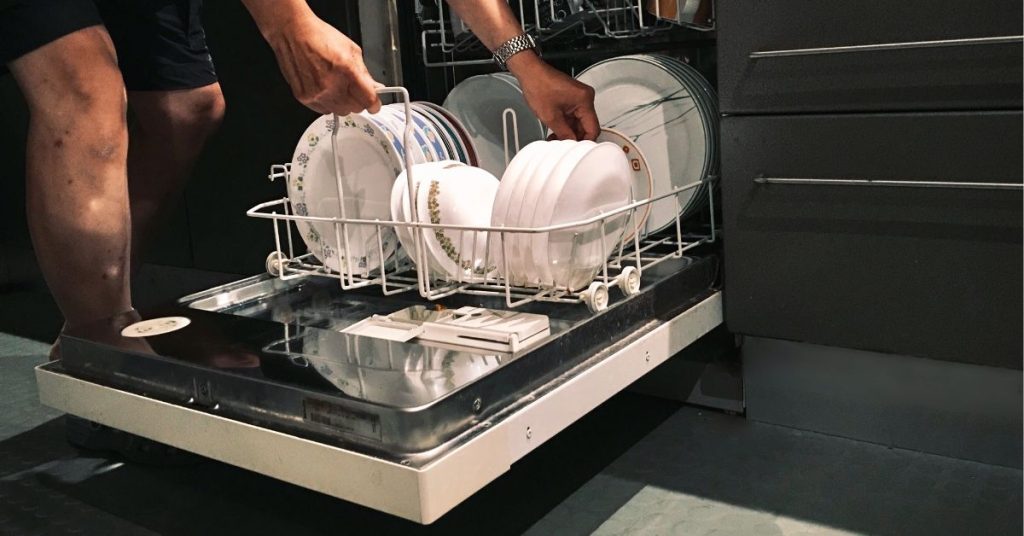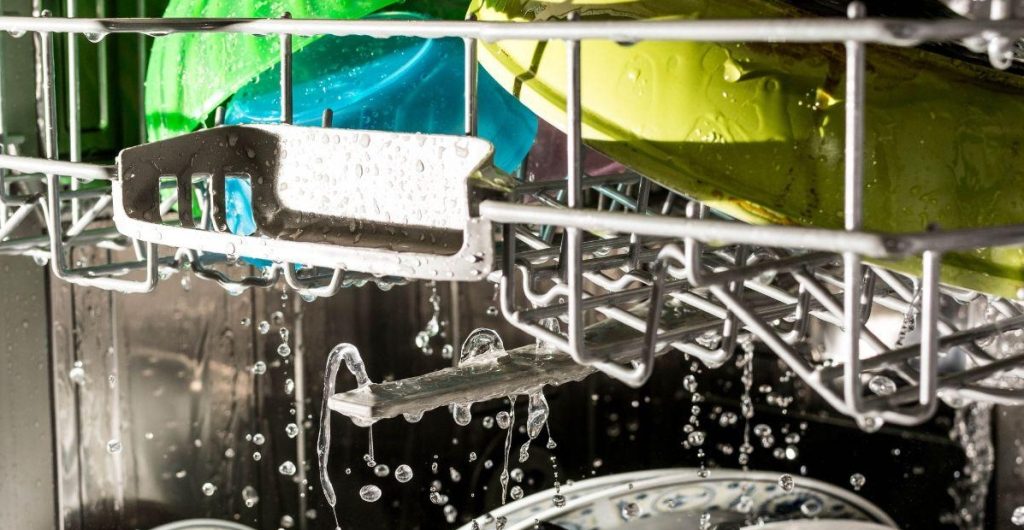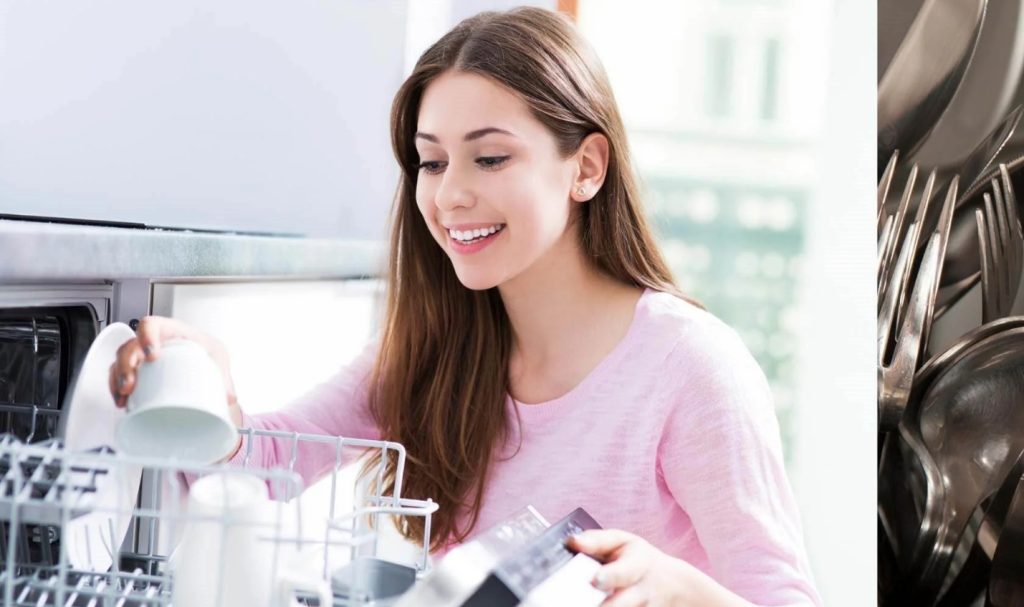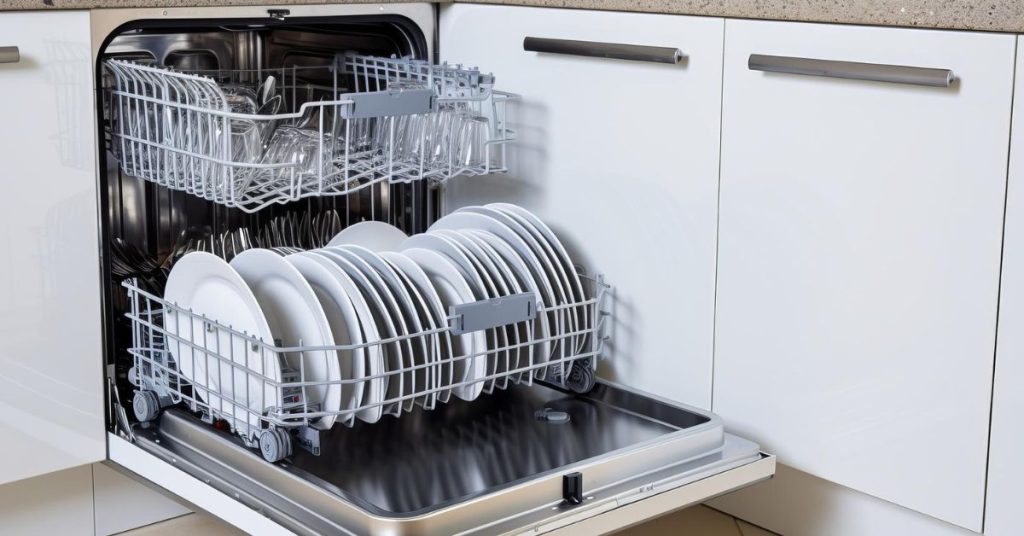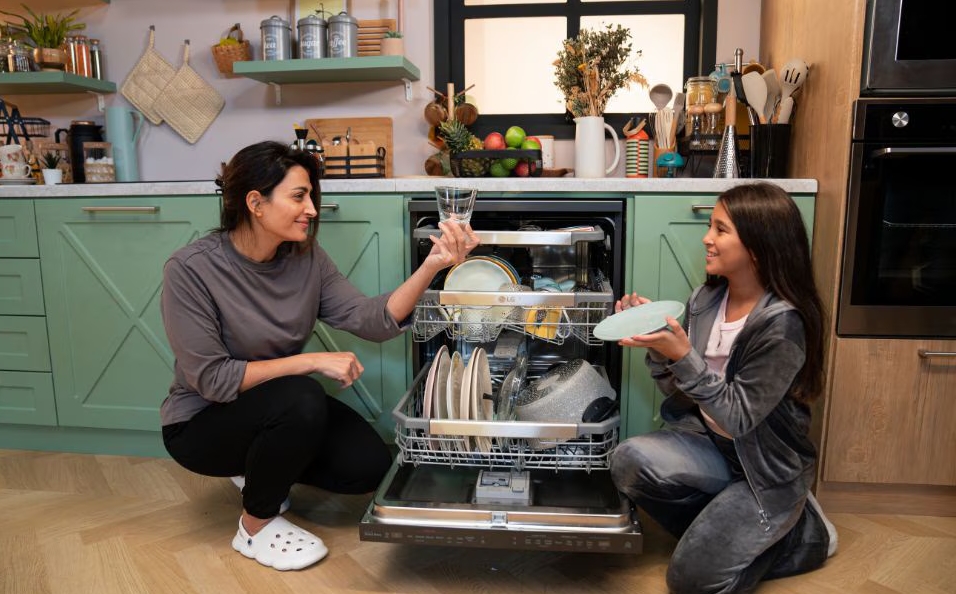Cleaning your dishwasher might not be at the top of your chore list, but it’s a task that can make a big difference in keeping your dishes sparkling and your appliance running efficiently. Over time, grease, food particles, soap scum, and mineral buildup can accumulate inside your dishwasher, leading to odors, reduced performance, and even bacteria growth. Fortunately, you don’t need fancy cleaners—household staples like vinegar and baking soda can do the trick naturally and effectively. This article walks you through a detailed step-by-step process, expands on related tips, and answers common questions to ensure your dishwasher stays in top shape.
Why Clean Your Dishwasher?
Dishwashers might seem self-cleaning since they wash dishes with hot water and detergent, but that’s a misconception. “Food gradually accumulates and collects in spots like the drain, spray arms, and baskets, feeding mold and bacteria and reducing the flow of water,” explains Southern Living. Without regular maintenance, these buildups can redeposit onto your dishes, leaving them less than spotless—or worse, smelly. A study even found that “70% of dishwashers contained yeast and 10% contained fungi which could pose a threat to human health!” according to Lemons, Lavender, & Laundry. Vinegar and baking soda, with their natural cleaning and deodorizing properties, offer a safe, affordable solution.[((Southern Living))]
What You’ll Need
Before diving in, gather these simple supplies:
- Distilled white vinegar (about 1-2 cups)
- Baking soda (about 1 cup)
- A dishwasher-safe bowl or mug
- A soft cloth or sponge
- An old toothbrush (optional for scrubbing)
- Dish soap (optional for filter cleaning)
- A towel (to catch drips)
These items are likely already in your kitchen, making this a budget-friendly cleaning method.
Step-by-Step Cleaning Process
Here’s how to clean your dishwasher with vinegar and baking soda, broken down into clear, actionable steps from trusted sources.
Step 1: Empty the Dishwasher
“Always start with an empty dishwasher. A good time to run a cleaning cycle is right after the clean dishes have been unloaded,” advises The Spruce. Remove all dishes, utensils, and racks if possible to access every nook and cranny.
Step 2: Inspect and Clean the Filter
“Pull out the bottom rack of the dishwasher and pull out anything that’s caught in the drain,” says Southern Living. Many dishwashers have a removable filter at the bottom—check your manual to confirm. If it’s removable, “soak the filter in a sink of water and dishwashing liquid. Scrub the filter clean with an old toothbrush. Rinse well and replace the filter.” This step prevents clogs and ensures water flows freely.[((The Spruce))]
Step 3: Run a Vinegar Cycle
“Place a glass or plastic container with 1 cup of distilled white vinegar on the top rack of the dishwasher. Run a regular wash cycle,” instructs The Spruce. The acidity in vinegar breaks down grease, soap scum, and hard water deposits. Skip the drying cycle to save energy—just open the door afterward to let it air dry. Architectural Digest adds, “Set the dishwasher to run on a hot water cycle. The vinegar will break down any remaining bits of food, grease, soap scum, residue, and any other leftover grime.”
Step 4: Run a Baking Soda Cycle
Once the vinegar cycle is done, “sprinkle 1 cup of baking soda on the dishwasher’s inside floor. Run a short hot water rinse cycle (skip the drying cycle),” per The Spruce. Baking soda neutralizes odors and tackles lingering stains, leaving the interior fresh and shiny. Southern Living notes, “Once your vinegar cycle ends, open the dishwasher and sprinkle a cup of baking soda over the bottom of the machine to remove any odors. Run it on the hottest setting again.”
Step 5: Wipe Down the Interior and Exterior
“While the interior is damp, use a soft cloth to wipe away any stubborn spots,” suggests Martha Stewart. For tough grime, make a paste with baking soda and water and scrub gently with a toothbrush. Don’t forget the exterior: “Wipe down dishwashers with plastic exteriors using hot, soapy water. Use one part vinegar to three parts water for stainless steel,” advises The Maids.
Step 6: Clean the Drain ( Optional Deep Clean )
For a deeper clean, tackle the drain. “Put one cup of white vinegar in a large, microwave-safe bowl, then heat it in the microwave for 15 to 20 seconds so it is slightly warm. Take the bowl out of the microwave and stir in two tablespoons of baking soda,” recommends Southern Living. Pour this fizzy mixture into the drain, let it sit for 10-15 minutes, then flush it with a kettle of boiling water to clear debris.
Step 7: Final Rinse
“Run the cleaning cycle one more time only with water. Do not add any detergents or cleaning ingredients,” says The Spruce. This ensures all residue is flushed out, leaving your dishwasher pristine.
Additional Tips for a Spotless Dishwasher
Beyond the basic cleaning, here are some expert-backed tips to enhance the process and maintain your appliance:
- Frequency Matters: “Stick to a regular dishwasher cleaning schedule. If you don’t do a deep cleaning every three months, then at least do a detailed cleaning once or twice a year,” advises The Spruce. For heavy use, monthly cleaning is ideal, as Molly Maid’s Marla Mock suggests: “I recommend giving it a vinegar treatment about once a month.”[((Martha Stewart))]
- Avoid Mixing Vinegar and Baking Soda Together: “Never mix the vinegar and baking soda in the same cleaning cycle. Although it won’t ruin your machine, the two ingredients will foam and may leave you with a mess to clean up,” warns The Spruce. Run them separately for best results.
- Check the Spray Arms: “Remove the spray arms by unscrewing them. Add a cup of white vinegar to warm, soapy water and soak the spray arms,” suggests Euronics. Use a toothpick or tweezers to clear food from the holes, then rinse and reinstall.
- Handle Hard Water Buildup: If you notice a white powdery film, it’s likely mineral scale from hard water. “My husband researched my dishwasher and found that running a quick cycle using citric acid crystals… cleans this,” shares Lemons, Lavender, & Laundry. Vinegar also helps, but citric acid can be a stronger alternative.[((Lemons, Lavender, & Laundry))]
- Mind the Gaskets: “Gently wipe around the rubber gasket with an old, soft toothbrush and a solution of three cups of hot water mixed with a 1/2 cup of vinegar,” advises The Home Depot. Avoid undiluted vinegar here—it can degrade rubber over time.
Why Vinegar and Baking Soda Work
Vinegar’s acetic acid (around 5% in distilled white vinegar) cuts through grease and mineral deposits, while also acting as a disinfectant. “Vinegar is effective because it’s acidic and removes hard water build-up,” notes cleaning professional Chris Willatt via WikiHow. Baking soda, a mild alkali, scrubs away stains and neutralizes odors. Together, they’re a powerhouse duo—just not at the same time, as their chemical reaction (fizzing) cancels out their individual strengths.
Expanding the Cleaning Routine
To keep your dishwasher in peak condition, consider these supplementary steps:
- Daily Maintenance: “Remove any leftover bits of food or debris at the bottom of the dishwasher,” suggests Whirlpool. This prevents buildup between deep cleans.
- Exterior Shine: “To polish stainless steel exteriors, use a cleaner like affresh® stainless steel cleaning spray,” recommends Whirlpool. For non-stainless models, a damp cloth with mild soap works fine.
- Alternative Cleaners: “Citric acid, found in lemons and limes, is sold in a powder form and can be used in place of vinegar or baking soda,” notes The Spruce. Sprinkle it in the detergent dispenser for a fresh, effective clean.
FAQ: Common Questions Answered
Here are answers to frequently asked questions, sourced from reliable experts:
How often should I clean my dishwasher with vinegar and baking soda?
“Many experts recommend cleaning your dishwasher once a month to keep it sanitary and running efficiently,” says Southern Living. Adjust based on usage—if you notice odors or grime sooner, clean it more often.
Can I use bleach instead of vinegar and baking soda?
“Bleach should not be used for cleaning dishwashers, as it can ruin the appliance. This is especially true with dishwashers with stainless steel interiors or parts,” warns The Spruce. Stick to vinegar and baking soda for safety.
What if my dishwasher still smells after cleaning?
“If funky, musty odors are still lingering after the vinegar cleaning, then it’s time to try baking soda,” suggests Hello Nest. Repeat the baking soda cycle, and check the drain or filter for trapped debris.
Will vinegar damage my dishwasher?
“Vinegar is a powerful cleaning agent… but the acidity can damage the rubber gaskets if used incorrectly,” cautions Martha Stewart. Use it in a container on the rack, not sprayed directly on seals, and limit frequency to avoid wear.
Can I mix vinegar and baking soda in one cycle?
“No, do not use them together at the same time—clean with the vinegar first and then with the baking soda,” advises Southern Living’s Amanda Poole. Mixing them creates a mess and reduces their effectiveness.
How do I handle orange slime in my dishwasher?
“The orangey-slime is caused by Serratia marcescens, a bacteria… If your dishwasher has stainless steel then you will need to do a vinegar/baking soda cleanse every few days to retard the growth,” explains Lemons, Lavender, & Laundry. Persistent cases may require a professional cleaner.


